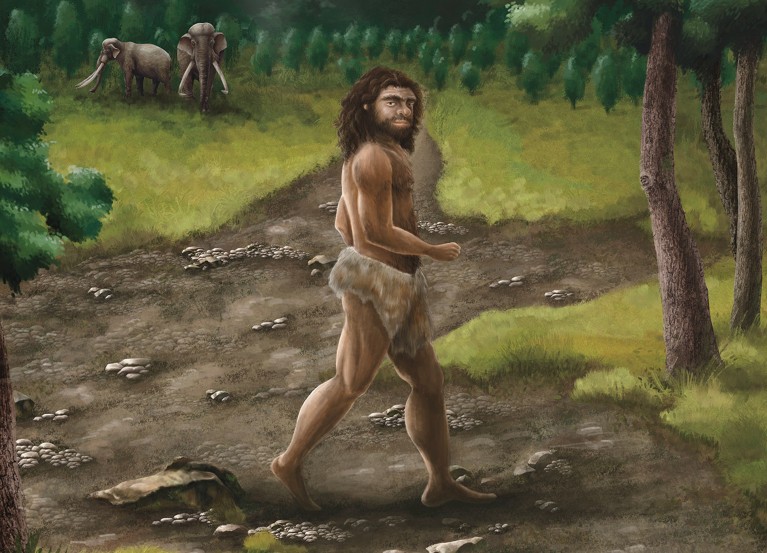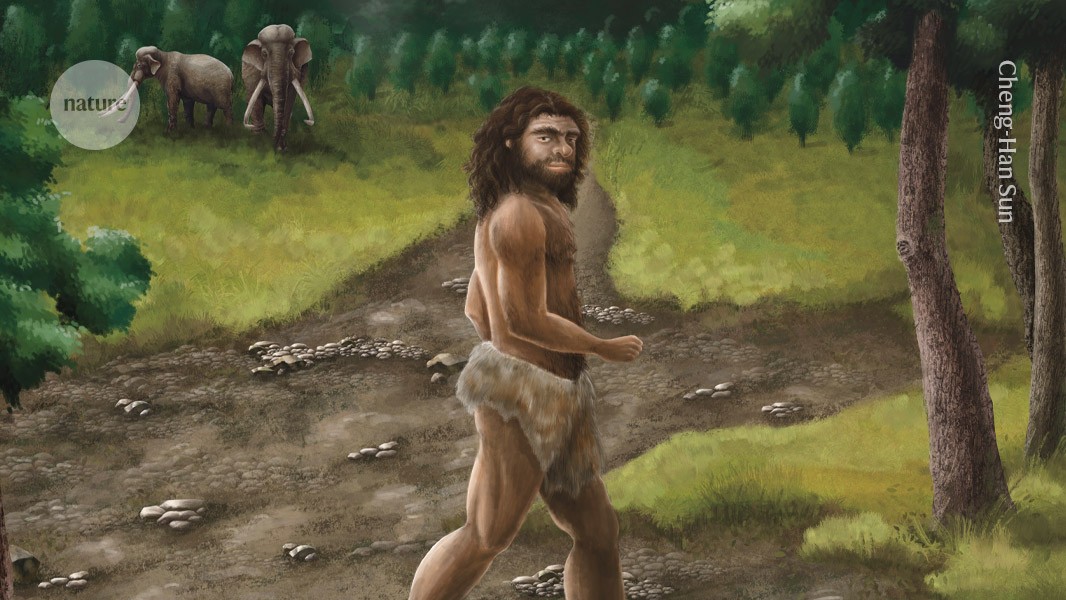
An artist’s illustration of an ancient human male, who belonged to the Denisovans.Credit: Cheng-Han Sun
A fossilized jawbone found off the coast of Taiwan more than 20 years ago belonged to a group of ancient humans, called the Denisovans, first identified in a Siberian cave.
The finding, published today in Science1, is the result of time-consuming work to extract ancient proteins from the fossil. It also expands the known geographical range of the group, from colder, high-altitude regions to warmer climates.
“I’m very excited to see this,” says Janet Kelso, a computational biologist at the Max Planck Institute for Evolutionary Anthropology in Leipzig, Germany.
The lower jawbone, with four teeth intact, is called Penghu 1 and was dredged up by fishing crews from the Penghu channel, 25 kilometres off the west coast of Taiwan. Penghu 1 was donated to Taiwan’s National Museum of Natural Science in Taichung after researchers recognized its significance as coming from an ancient human relative2. But the identity of that unknown relative remained a mystery, until now.
Ancient proteins
Researchers spent more than two years carefully refining techniques for extracting ancient proteins from animal bones taken from the channel. They then used acid to isolate protein fragments from the surface of a Penghu 1 molar tooth and enzymes to extract them from the jawbone.
The team identified several degraded fragments, two of which bore specific amino-acid sequence variations matching those seen in the genetic sequences of a Denisovan finger bone3 found in the Denisova Cave in southern Siberia in 2008. The researchers could also tell that the jawbone came from a male Denisovan.
It’s the second time that molecular evidence from ancient proteins has definitively linked fossil remains to the Denisovans. The first time was in 2019, when proteins from a jawbone found in a cave in Tibet, called Xiahe 1, was determined to be a Denisovan fossil4.
Pinning down an exact age for the Penghu fossil is challenging because scientists do not have samples of the sediment it was buried in.
“One can only say it’s older than 50,000” years, says Rainer Grün, a geochronologist at the Australian National University in Canberra, who dated the fossil in 2015 and subsequently reanalysed the data5.
The Xiahe 1 mandible is at least 160,000 years old, and material from the Denisova cave indicates that Denisovans lived in Siberia between 200,000 and 50,000 years ago. At that time, sea levels were lower and the Chinese mainland was connected to Taiwan.


